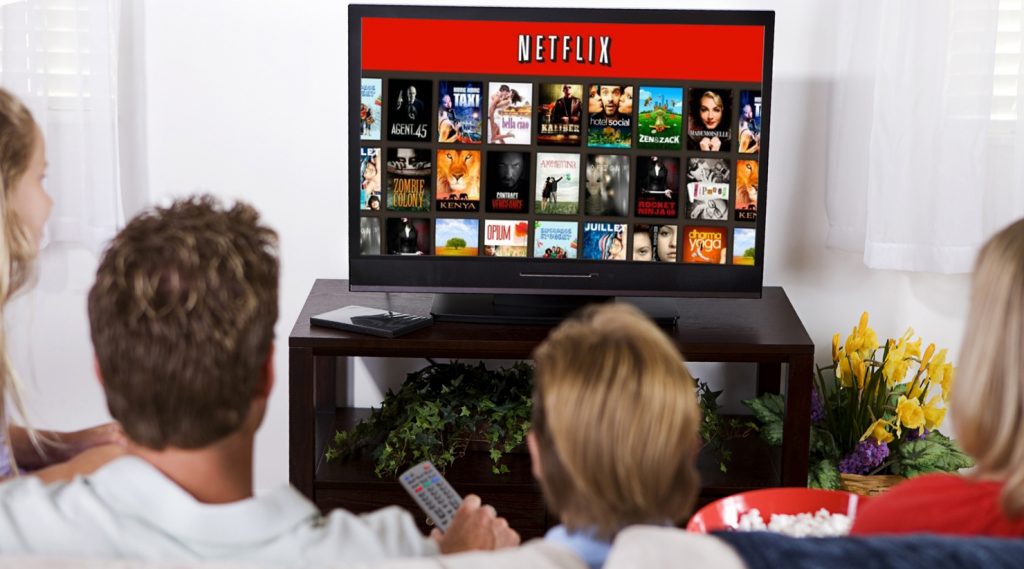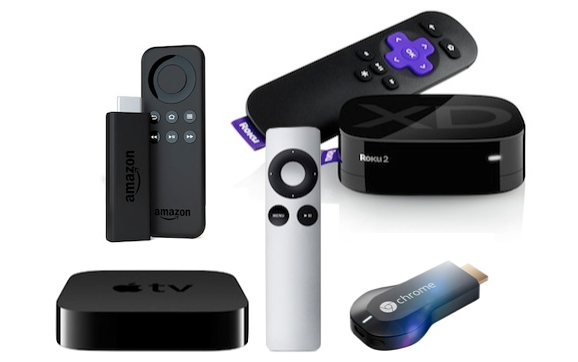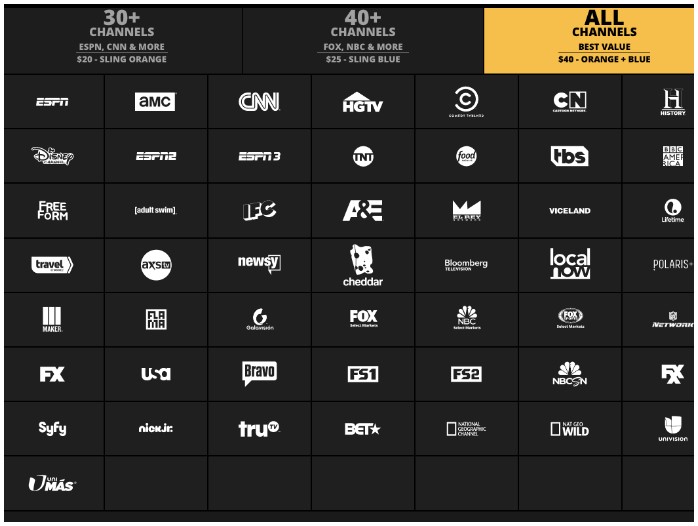Streaming seems almost as common as watching regular TV these days. There’s the big services like Netflix, Hulu, Disney +, Youtube TV, and others that we may have heard about but don’t really understand. Even with the popularity of streaming and the constant mention of apps, channels, and streaming services, streaming is still rather confusing. In this blog article, we’ll explain why.
First of all, let’s define streaming. Streaming is actually a broad term that means watching or listening to any file from the Internet without saving or downloading it. Think of regular TV and radio broadcasts. We watch or listen to them but they aren’t being “stored” inside our TV or radio for playing again later. Streaming is like that but it also has the “on-demand” component of being able to choose what you want to stream, when you want to stream it. So it’s also a bit like a library. You don’t keep the content, you just “borrow” it to enjoy it.
As we covered in a previous blog, streaming requires three things: (a) Internet, (b) a streaming device, and (c) content. Read more about what you need for streaming here. What makes streaming confusing? Streaming is confusing for three main reasons:
First, there is no central organization, authority, or administration for streaming services and apps. While you can probably “google” which app(s) carry specific programs or movies that you want to watch, there is no one place or easy way to view a master list of shows, movies, sports leagues, and other content to find out which apps carry what. Generally, cable channels all have their own apps for streaming their content, although they may be included in “package” services like Sling and YoutubeTV, which give you a bunch of channels. Network channels offer their content through their own app as well as through “library” apps like Netflix and Hulu, but the content can vary and you may need to wait to watch brand new shows.
Sports programming, for example, is where things get really messy. Between the different leagues, the sports-specific channels that carry their games and the network channels that carry their games—- each with their own streaming services, it is hard to figure out which streaming services or channels you need in order to watch games from specific teams. Instead of a standard cable package to see all of the Packer, Badger, Brewer, and Bucks games, one might need four – or more – streaming services to catch all of the games. That means subscribing to four or more services, just for your sports. And we haven’t even talked about golf, NASCAR, fishing, or other sports.
It seems like the only way to find out what’s available on an app, and whether you want to subscribe to it, is to subscribe to it! Fortunately, many apps offer a 30-day free trial. You typically have to sign up and enter a credit card, but you are not charged for the first thirty days. Speaking of subscriptions, apps all decide their own pricing as well. Many apps are completely free and many others require a monthly paid subscription (via credit card) to access their content.
Second, streaming apps don’t really publish all of the shows and movies they offer. Sure, they advertise a few shows and movies to get people interested in their app, and a “channel” app, like HGTV, will offer HGTV shows, but there isn’t a website you can use to see what they all offer. In fact, not all content from a particular channel will even be available in their app and some of their content may require a paid subscription. We are seeing channels like HGTV and ESPN moving more of their streaming content from the version included with cable and satellite plans to a “premium” level that requires a separate paid subscription. Some channels offer multiple apps, or a “free” version and a “Premium” (aka paid) version.
In fact, not only do they not publish their content, but it changes all the time. Every month, there are dozens of shows and movies being added and removed from streaming apps. What was there this week might not be there next week. An HGTV show you used to be able to stream for free today might move to the HGTV app that requires a subscription tomorrow. Every time you get comfortable, it changes!
Third, each streaming device is a little different. You’ve got a dozen or more brands of smart TVs and each one has four or five models. There are streaming sticks and boxes from Roku, Amazon, Google, and Apple. Other devices like DVD players, Bluray players, and game consoles include smart features for streaming. And personal devices like phones and tablets can do streaming. Each one looks and acts a little different from the next. Even using the same app, such as Netflix, on different devices may vary in how it looks and functions. You have to learn and remember a different set of instructions and screens for each streaming/smart device you use.
And like many devices, tools, and contraptions, streaming devices vary in quality of their interface and response. One brand and model may work well and respond quickly while another one may feel very slow and “clunky” when trying to navigate. This just adds frustration to the existing situation of learning the streaming apps and services.
The bottom line is nothing is published, nothing is standard, and nothing stays how it is for very long.
What can you do about it?
We have a few suggestions to make streaming a little less confusing.
First, ask what your friends/family have and what they think of it. Ask for the things they like and the things they don’t like. Keep in mind whether the people you ask are at the same knowledge level as you! Getting some real input from people you know (and who know you) can be much more helpful than any opinions you find online or in a store.
Second, try it out! If a friend or family member has something they like, ask if you can play around with it. Handle the remote, get into the apps, move around through the menus, etc. If nobody has something you can use, go to a store where you can actually try something out. Best Buy is usually a good store for this. While smart TVs and streaming devices are generally the same, they all have a different look, different menus, and a different way to operate them (remote, smart phone, etc.).
Third, when you find something you like, get it for each device (TV) you would like to stream from– even if that TV is a smart TV. You do not have to use the smart features of a smart TV. For example, if you find Roku easier to use, you can buy a Roku box or stick for each TV, even if it’s a smart TV, and then you’ll have the same exact system on each TV.
Fourth, look online— go to Youtube.com and search for videos on the streaming devices and streaming services you are interested in to find demos, tutorials, and how-to guides. While it’s not quite as helpful as trying something in person, it’s a good option if you can’t get advice from friends or family or if you don’t have a place to try them in person.
In addition to finding tutorial videos, you can also find out what each streaming service offers in terms of channels, networks they cover, and variety of shows/movies. While the “library” style providers like Netflix and Hulu generally do not publish their content library online, you can usually search for the specific shows, movies, and sports teams you like to watch to find out which service(s) carry them.
Keep in mind that you may need to create a combination of apps and streaming services to get all of the content you would like. Network stations offer free streaming of their primetime shows — you just have to download their app to your streaming device. Other providers may require a monthly fee — usually between $5 and $15 per month — to watch their content.
Fifth, look to Package Providers. If you want an experience more like traditional TV, look into content providers that offer “packages” of channels, including Sling, YoutubeTV, and AppleTV, make streaming easy because you only have to download their app (and pay a monthly fee) and you get a wide variety of channels to stream from one source. They usually have a few levels of service, depending on how many channels you want or how much you want to spend. For about $50 per month, you get roughly 75 channels — sports, entertainment, kids, music, life, etc. — including network stations, so you don’t have to figure out a mixed-bag solution of streaming providers. Then you just open their app and all of the channels in your package are at your fingertips to scroll/browse/surf, just like traditional TV.
Learn more: Sling TV | YoutubeTV | Apple TV
We also have a couple videos on our website to help you sort out streaming devices and streaming services.




